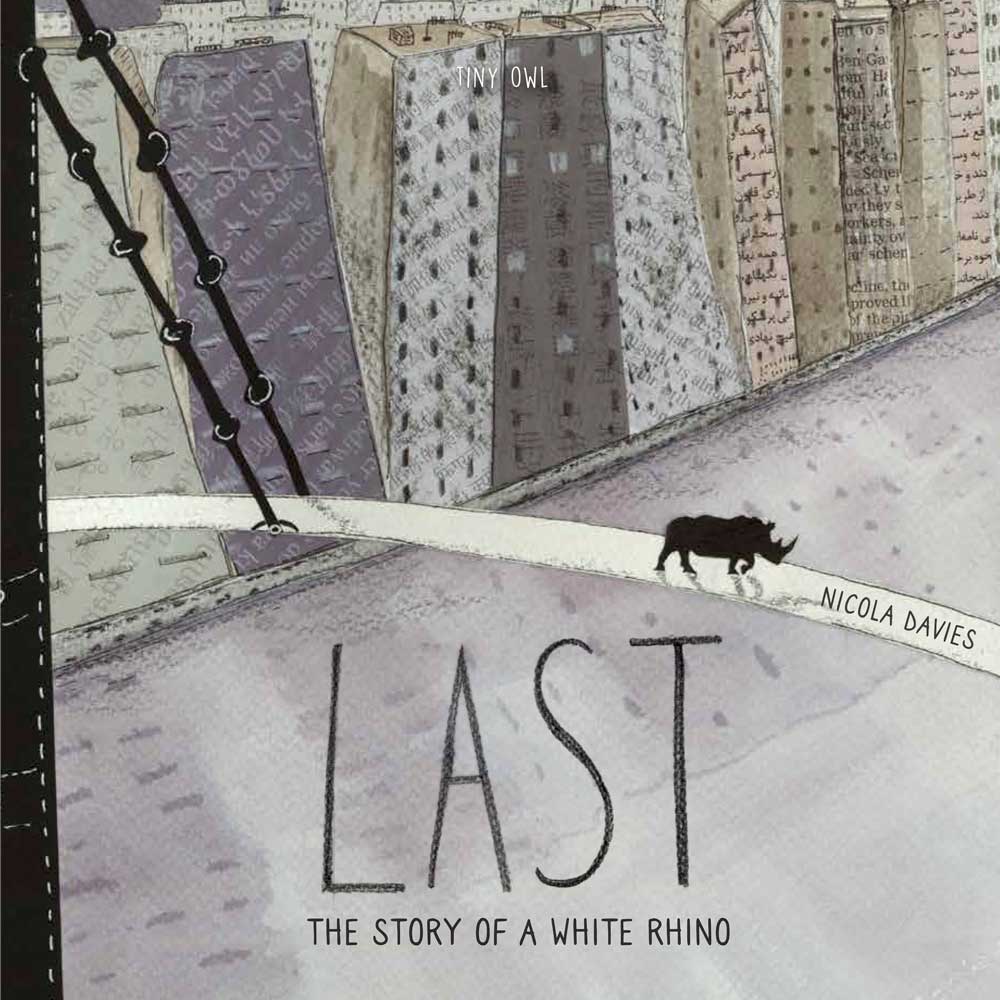
Price: £26.80
Publisher: Tiny Owl Publishing
Genre: Picture Book
Age Range: 5-8 Infant/Junior
Length: 32pp
Buy the Book
Last: The Story of a White Rhino
Nicola Davies is well-known as an author, many of her books being about nature or the environment, but here she illustrates her own book as well, and this reviewer certainly hopes that she will continue illustrating her own books. Last tells the story of Sudan, the last male Northern white rhino, from his own point of view, though he is not named in the story. He loves being among the grass and flowers with his mother, and the smell of the rain, but then one day she lies very still (we see the poacher and his gun, with her horn on the ground) and he is put in a box and taken far away. The colour palette now turns to grey as Sudan paces in his cage in a zoo. He is miserable, not finding any more like him, and the rain smells ‘empty’. Eventually he is put in a box again, and taken back to a land he recognizes, we return to full colour – and there is another white rhino: perhaps he is not the last after all.
Unfortunately, those who have heard of Sudan will know that he doesn’t father any baby rhinos, and he died in 2018, so, on the entire planet, there were only 2 females, one of which died recently. His sperm may be used in the future with a Southern White Rhino, but we have to realise that there will be other ‘last’ creatures if we are not more careful. The message is made clear at the end of the book, in Nicola Davies’ notes.
Her illustrative style is interesting – words, only slightly darker than the background colour, are placed on some of the buildings and animals, so on the first page we see the rhino, in a close-up of his face, and the text goes in different ways on his horn and on his body, with more on the building behind a young girl in a yellow raincoat who is shown watching him. (The girl reappears as the story progresses, and finally she is there with her binoculars as he happily explores his old home again.) The writing is in different languages, and she explains at the front of the book that it may be the words of Martin Luther King, Chief Seattle or Paul Hawken. This is to contrast the bleakness of advertising with inspirational words: she quotes Paul Hawken on planet-saving, ‘Do what needs to be done, and check to see if it was impossible only after you are done’. Young readers, though, may not even notice the words, and the story works without this extra level of meaning. There is also much to talk about here, about captivity, conservation and preservation, and this could be useful in the classroom setting as well as in the library.




